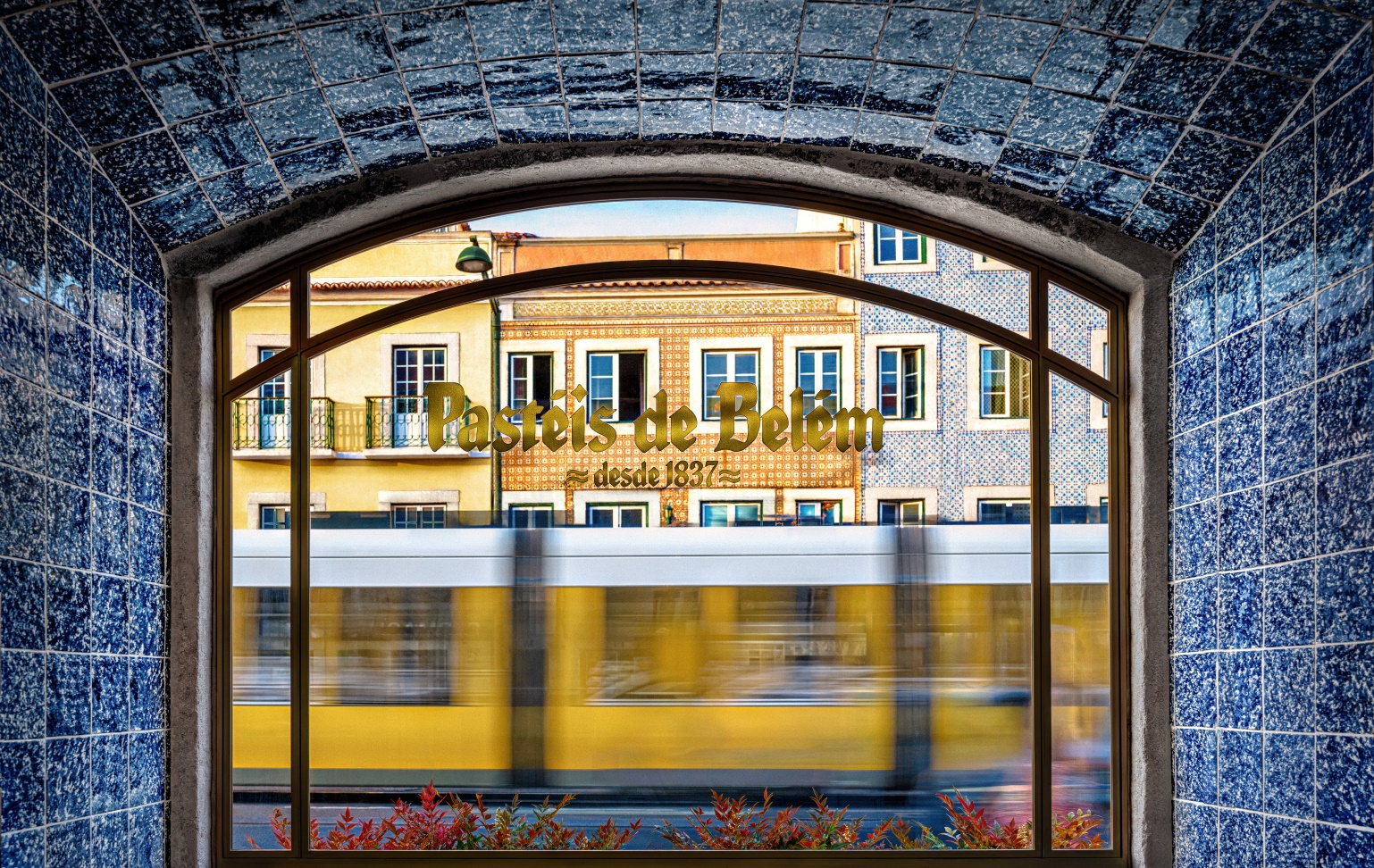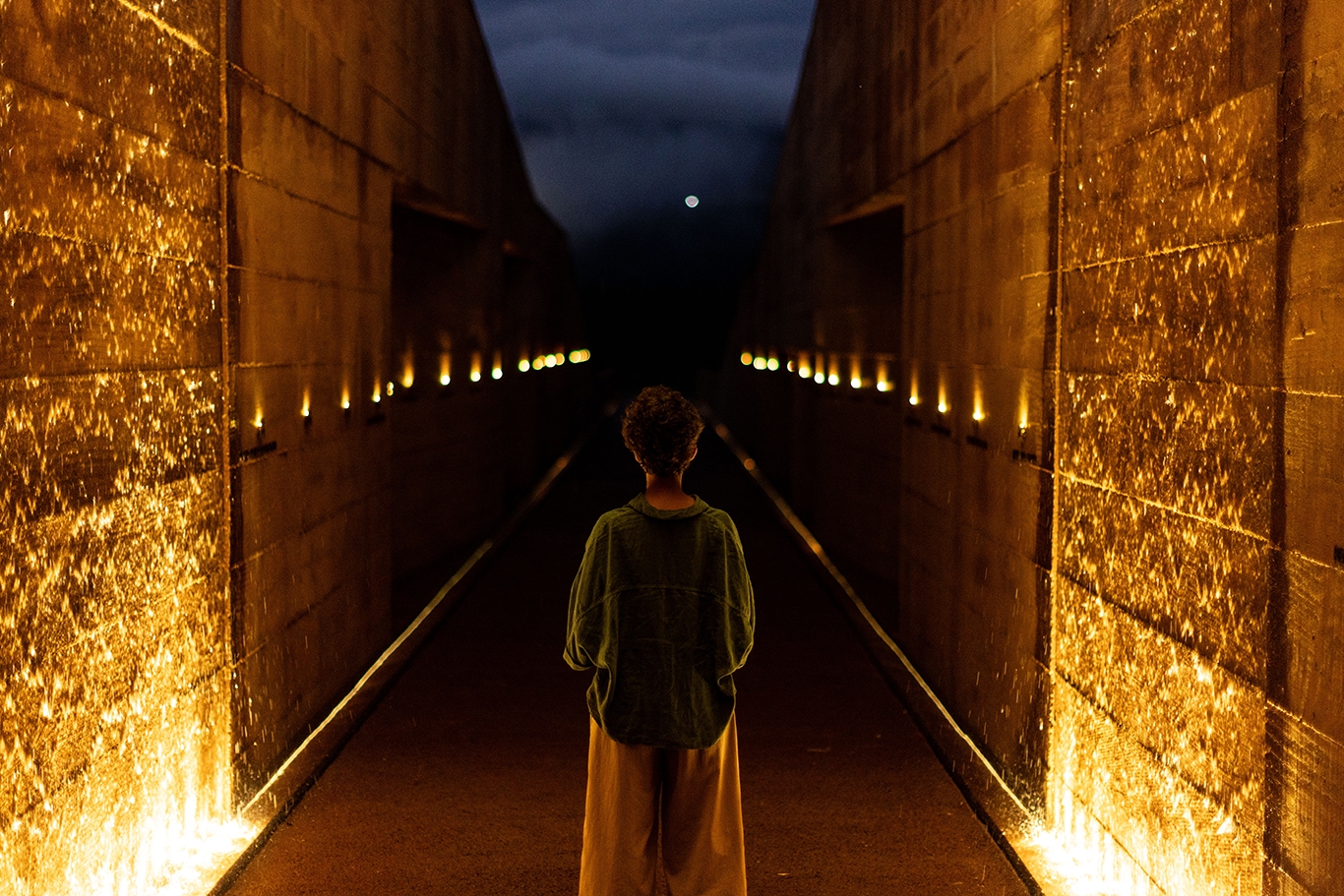Header: Leonor Gomes
The first thing I noticed when I walked into “Du Cœur à la Main,” Dolce & Gabbana‘s exhibition at the Grand Palais, was the visual art. The Italian brand collaborated with artists to bring their collections to life, either through moving projections of green fields or giant metallic hands opening and closing, almost dancing—Felice Limosani’s “The Hands of Humanity.”
The entry space set the tone. Garments stood beneath soft lighting, their surfaces dense with embroidery, appliqué, and lace. The focus was on technique—on hands, materials, and process. Nothing felt rushed or casual, as even the less ornamental pieces called for attention.

After a brief introduction to the brand, I entered the first of twelve spaces. Each room in the exhibition opened like a different world—self-contained, carefully constructed, and immersive. It was clear from the start that this was a sequence of atmospheres, each built around a theme, a material, or a reference that shapes Dolce&Gabbana’s work.
Handmade
The first space hits you immediately, with mannequins lined up showing beautiful artworks in dress form. Both the space and clothes reference regional Italy: majolica from Capri is translated into glimmering beadwork, and the outline of trulli roofs is reinterpreted in braided textiles. Alongside the garments, paintings by Anh Duong show her wearing Dolce&Gabbana looks in staged settings—part portrait, part costume study.


Architectural and Pictorial
Moving into the second space felt like entering a cooler, quieter environment. A video projection of Carracci’s Palazzo Farnese frescoes looped overhead while garments beneath echoed the same sense of structure and layering. The designers’ admiration for painters like Botticelli and Raphael came through not just in prints or palettes, but in how shapes were built—how a hem carried weight, how volume was distributed.


Dream of Divinity
The next space felt like stepping into a temple, as the lighting was soft and the atmosphere quiet, almost suspended. Inspired by the Valle dei Templi in Agrigento, the room brought together classical references and a sense of staged stillness. Garments were arranged like deities: draped tunics, corseted dresses, and kimonos embroidered with lurex brocade, designed with a strong focus on the feminine figure—elevated, idealised, but never static. The gold and metallic threads of the garments echoed the mosaic work on the walls, created by the Orsoni glassworks in Venice.


Divine Mosaics
Then came an intense shift: stepping into Divine Mosaics, only a short, dark corridor away. The room was brighter, filled with gold and colour, and Orsoni’s mosaics lined the walls. Detail-rich garments seemed to fight for our attention, as each was more intricate than the other: around us, tunics, coats, and dresses built with layered embroidery, metallic thread, and patchwork techniques. The clothes referenced the mosaics of Monreale and San Marco. Still, they didn’t feel like replicas since all parts come together to form a larger, almost religious image – the Byzantine religious artistic style can’t be missed here.


Sicilian Traditions
Sicilian Traditions was definitely the most colourful room in the entire exhibition, and I distinctly remember hearing almost everyone mention a “wow” when walking in. The new world was fun and loud, like stepping into a street in Palermo during a festival—bright ceramics, painted wooden carts, and richly embroidered garments filled the space. At the centre stood a full-scale Sicilian parade cart, covered in detailed panels and tiles made by artisans Salvatore Sapienza, the Bevilacqua brothers, and Gianfranco Fiore. Around it, Alta Moda and Alta Gioielleria pieces from the Palermo FW 17/18 collection echoed the same palette—reds, yellows, greens—all layered with gold and symbolic references. It was one of the most immersive spaces in the exhibition, not just visually but emotionally—something about the density of craft, colour, and tradition stayed with you.


White Baroque
White Baroque stood out for its simplicity of colour, an all-white background with white garments and a sole black dress. Coming from the golden richness of Mosaics, being presented with such a sculptural room made me pay attention to each piece even more. The clothes were carefully shaped, padded, and structured, standing upright rather than hanging. The reference to Sicilian stucco work was clear, especially in how the fabrics were layered and sculpted to mimic decorative elements found in churches. Without any colour, the focus shifted fully to form, volume, and texture, with every detail made to hold your attention.


Devotion
The next room reintroduced the contrast Dolce&Gabbana is known for. Dark walls, golden embroidery, red accents, and at the center of it all: the Sacred Heart, repeated across garments, bags, and installations. Some pieces looked like they belonged on stage, others on an altar, but all visitors dreamed they belonged to them. It was one of the more symbolic rooms, but the focus stayed on material and execution—how crystals were arranged, how gold thread was layered, and how silhouettes held their shape.

Ateliers, Ornaments and Volumes
In Ateliers, Ornaments and Volumes, the mood shifted again. This time, the attention was on the making. Black garments in progress stood on mannequins, surrounded by tools, sketches, and fabric swatches. The space resembled a working studio more than a display. Even though they were unfinished, the pieces carried structure and intention, almost as if they didn’t know they were works in progress. It was the first time the behind-the-scenes element was fully visible, and I noticed many people took their time looking at every little detail of this cramped room.


The Leopard
From there, I entered The Leopard and quickly decided Alain Delon must be somewhere around me. The setting referenced the ballroom from Visconti’s film “Il Gattopardo”—mirrored floors, film stills, and period-inspired dresses. These dresses took all of the attention, as they were soft and elaborate, echoing 19th-century Sicily. Immersion worked in funny ways here, as it was hard to tell whether you were stepping into the film or walking through a memory of Italy’s past chic ballrooms.

Au Cœur de Milan
This small space could almost be mistaken for a passageway if it weren’t for the beautiful gown placed at its centre. A single gold lace dress, accompanied by a selection of fine jewellery, was clearly screaming, “I deserve your undivided attention, hence why I’m alone”. The dress’s structure, with its wide, rounded skirt, referenced the dome of the Galleria Vittorio Emanuele II, and the gold detailing also pointed to the Madonnina statue on top of Milan’s cathedral. This section is, then, a direct nod to the city where Dolce&Gabbana’s Alta Moda, Alta Sartoria, and Alta Gioielleria collections are designed and produced.

Opera
The room that followed was more performative: stools were even placed around the garments to give the feeling of sitting in an opera house, watching the scene unfold. A long banquet table ran through the center, set as if mid-performance, and surrounding it were dresses that referenced arias and heroines from Verdi and Puccini—pieces covered in lace, veils, crowns, and bold patterns. The intensity of colour and detail pulled you in, and I stayed longer than I expected, just observing. Near the end of the room stood a gold lace dress referencing Milan’s Madonnina, acting almost like a closing note.

The Art and Craft of Glassworking
The last space closed the loop, with mirrors and chandeliers covering the walls and ceiling and garments made with reflective materials and crystal embroidery filling the space. Around us, the sound of breaking glass was all that could be heard. The use of glass is tied back to the idea of transformation—how something hard can be made light, how a garment can hold light, scatter it, or disappear into it.

Each room in the exhibition was built to immerse but never overwhelm. Together, they offered a close look at how Dolce&Gabbana thinks in space, texture, and layers, and how they use collaboration not just as a source of inspiration but as part of their construction process.
After leaving the exhibition, I went home thinking of my favourite pieces and where I would wear them if I ever got the chance. It took a while to figure out the perfect place, but I decided that anywhere with the Mediterranean as a background was the way to go.










